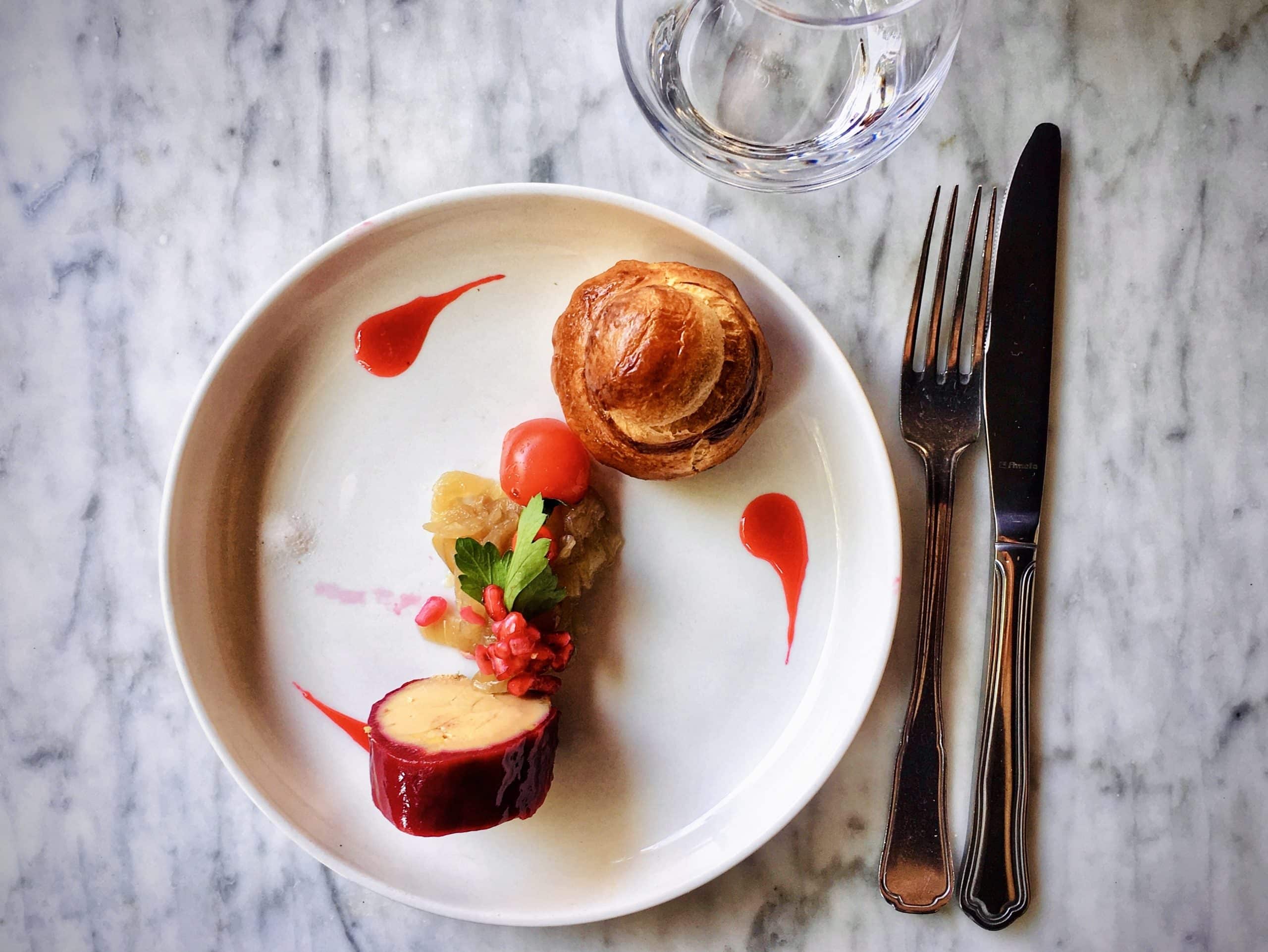Can You Master the Art of a Gourmet French Cassoulet with Duck Confit?

Cassoulet, a slow-cooked casserole containing meat and white beans, is a classic dish in French cuisine. Famed for its rich and hearty nature, the traditional recipe of cassoulet often includes the use of succulent duck confit, pork, and sometimes mutton or sausages. Known for its elaborate cooking process and deep flavors, this dish provides the ultimate comfort food experience. It is a culinary highlight of the South of France, particularly in the towns of Carcassonne, Castelnaudary, and Toulouse. By the end of this article, you will be able to grasp the essence of its preparation technique and hopefully master the art of cooking this gourmet French cassoulet with duck confit.
Understanding the Tradition and History of Cassoulet
Before embarking on your French culinary adventure, it’s essential to understand the dish’s tradition and history. The word ‘cassoulet’ stems from the French word ‘cassole’, which refers to the traditional, round, deep earthenware pot with slanting sides in which the dish is cooked. This dish dates back to the Middle Ages and was initially a food for the poor, crafted with whatever ingredients were on hand.
A lire également : How to Prepare a Gourmet Grilled Halloumi Salad with Pomegranate and Mint?
Over time, the humble cassoulet evolved, becoming a more sophisticated dish. The key to a great cassoulet lies in its unique blend of ingredients and the slow-cooking process, which allows for the flavors to meld together beautifully. Each region has its own variation of the recipe, with Toulouse and Carcassonne using mutton, while Castelnaudary’s recipe is known for pork and sausages. Our focus, however, is on the dainty variant with duck confit.
Selecting the Best Ingredients for the Cassoulet
To cook an authentic cassoulet, you need the best ingredients. As the saying goes, the quality of your dish will only be as good as the quality of the ingredients you use.
A lire aussi : Can You Create an Authentic Turkish Baklava with Nuts and Honey Syrup?
The primary ingredient is white beans, typically a variety called ‘lingots’ in France, known for their ability to absorb and complement other flavors. If ‘lingot’ beans aren’t available, you can use other types such as Navy or Great Northern beans.
The meat used in cassoulet varies, but for this recipe, we’ll focus on duck confit, a tender and flavorful meat that pairs excellently with the beans. Duck confit is a cooking method where the duck is cured in salt, then cooked slowly in its own fat. This results in a rich, flavourful, and tender meat that practically melts in your mouth.
Alongside duck, pork is another common meat used in cassoulet. It adds body and richness to the dish, and can be in the form of pork shoulder, belly, or sausage.
Herbs and spices like thyme, bay leaves, and garlic add depth to the cassoulet, while breadcrumbs sprinkled on top create a tasty crust.
The Cooking Process of Cassoulet with Duck Confit
Cassoulet is all about the slow, careful cooking process. It’s a dish that can’t be rushed and requires attention to detail, making it an exceptional exercise in culinary patience.
Start by soaking your beans overnight, as this will reduce the cooking time and make them easier to digest. The next step is to prepare your meats. The duck confit needs to be pan-seared to render its fat, which will add a robust flavor to the dish.
The beans and meats are then combined in the cassole with chicken stock, herbs, and spices. This concoction is left to simmer slowly, allowing the flavors to meld together and the beans to become tender, but not mushy. The cassoulet is then topped with breadcrumbs and baked until a golden crust forms on top. This crust serves as a seal, trapping in the flavors and adding a crunchy texture to the otherwise soft dish.
Tips from Chefs on Perfecting Your Cassoulet
Even with the best ingredients and recipe, perfecting your cassoulet requires some tips from the experts. First, chefs recommend using a wide and shallow cassole to ensure the beans and meat cook evenly.
Additionally, adding the breadcrumbs too soon can lead to them burning, so wait until the final hour of baking to add them. This ensures a beautiful golden crust without the risk of charring.
Finally, while it may be tempting to dig in as soon as the cassoulet comes out of the oven, resist this temptation. Letting the cassoulet rest for about 15 minutes before serving will allow the flavors to settle and the heat to distribute evenly.
Variations of Cassoulet and Accompaniments
While traditional cassoulet with duck confit is a classic, there are numerous variations to this dish. Some use chicken instead of duck, while others add mutton or lamb. Vegetarian versions of cassoulet replace the meat with various vegetables like carrots, celery, and tomatoes.
When it comes to accompaniments, cassoulet is usually a meal in itself, but a fresh, simple salad or some crusty French bread can complement the rich and hearty cassoulet nicely. A glass of wine, particularly a full-bodied red from the Languedoc region where cassoulet originates, also makes for an excellent pairing.
In the end, mastering the art of cooking cassoulet is about understanding its history, selecting the best quality ingredients, following the time-honored cooking process, and adding a personal touch to make it your own.
The Role of Each Ingredient in a Cassoulet with Duck Confit
In French cooking, every ingredient serves a purpose, contributing a layer of flavor or texture to the final dish. For a cassoulet with duck confit, the same principle applies.
Starting with the duck confit, which is typically a duck leg cooked in its own fat. This method of cooking, known as confit, results in a succulent, fall-off-the-bone tender piece of meat that forms the epicenter of the cassoulet. It’s rich, savory, and has a depth of flavor that only comes from slow-cooked duck fat.
The white beans, preferably of the ‘lingot’ variety, are the backbone of the dish. Their mild flavor absorbs the rich essence of the duck legs, garlic cloves, and bay leaves. The beans are cooked slowly until tender, but still holding their shape, providing a textural contrast to the soft, tender duck confit.
To add a layer of complexity to the flavor profile, garlic cloves and bay leaves are incorporated. Garlic, a staple in French cuisine, adds a savory punch, while bay leaves lend an aromatic and slightly bitter note, balancing the rich flavors.
Bread crumbs are added towards the end of the cooking process, forming a crusty layer on top of the cassoulet. These crumbs, toasted in either duck fat or olive oil, add a delicious crunch and textural contrast to the soft beans and meat beneath.
The dish is typically finished off with a drizzle of flavorful olive oil or goose fat, and a generous sprinkling of salt, ensuring every mouthful is a delight to the senses.
In a well-executed cassoulet, the combination of these ingredients creates a symphony of flavors, each one distinct yet harmoniously blending with the others.
The Perfect Wine Pairing for Cassoulet
A key element of French cuisine is its synergy with wine. The perfect bottle can enhance and complement the flavors of the dish, elevating the dining experience. For a hearty, rich dish like cassoulet with duck confit, a robust food wine from the same region where the recipe originates is typically the perfect match.
The Languedoc-Roussillon region of southern France, where cassoulet was born, is renowned for its full-bodied red wines. These wines, often featuring notes of dark fruit and a hint of spice, are robust enough to stand up to the rich, complex flavors of the cassoulet. They complement the dish without overpowering it, resulting in a harmonious dining experience.
If red wine isn’t to your taste, a rich, full-bodied white wine could also pair well with cassoulet. A French Chardonnay, for instance, with its creamy texture and notes of butter and vanilla, could be a delightful match, its richness mirroring that of the duck confit.
Remember, the best wine pairing is the one you enjoy the most. So, feel free to experiment and find the perfect match for your palate!
Conclusion: Master the Art of Gourmet French Cassoulet with Duck Confit
Mastering the art of a gourmet French cassoulet with duck confit is not just about following a recipe. It’s about understanding the history and significance of the dish, appreciating every ingredient’s role, and being patient with the slow cooking process. It’s about the joy of French cooking, where the journey is as delightful as the destination.
Whether you’re a seasoned chef or a home cook, this dish, with its rich flavors and hearty texture, is sure to impress. Pair it with a glass of wine from the same region, and you’ve got a culinary experience that is quintessentially French. With the knowledge you’ve acquired from this article, you’re well on your way to mastering this iconic dish.
So, don your apron, gather your ingredients, and get ready to cook your way into the heart of French cuisine with a delectable cassoulet. As Julia Child, the doyenne of French cooking in America, once said, "The only real stumbling block is fear of failure. In cooking, you’ve got to have a what-the-hell attitude." So, embrace the what-the-hell attitude, and take the plunge. Bon appétit!
